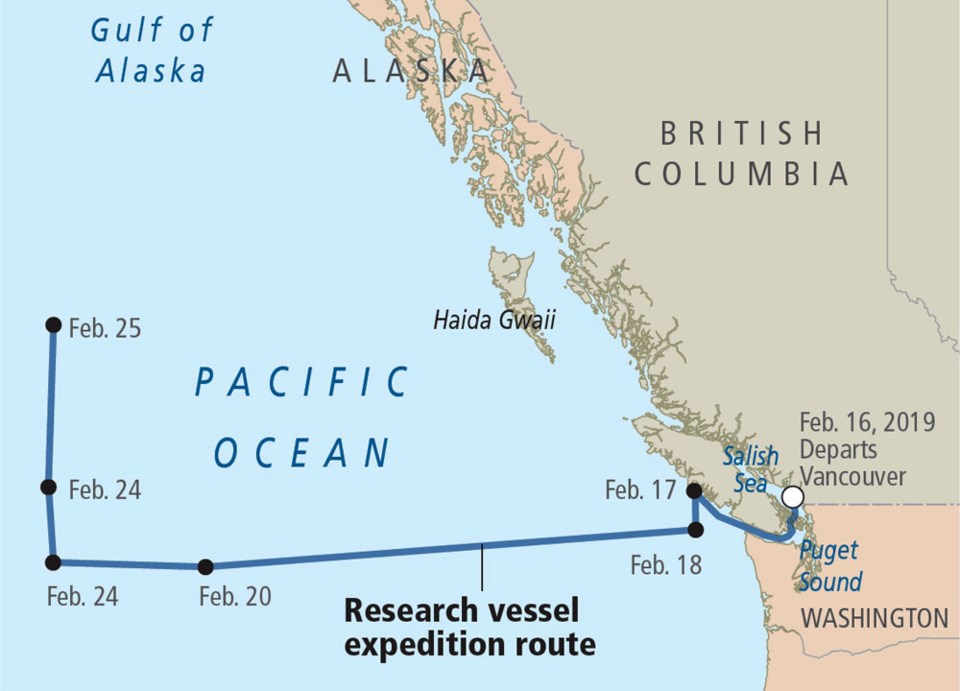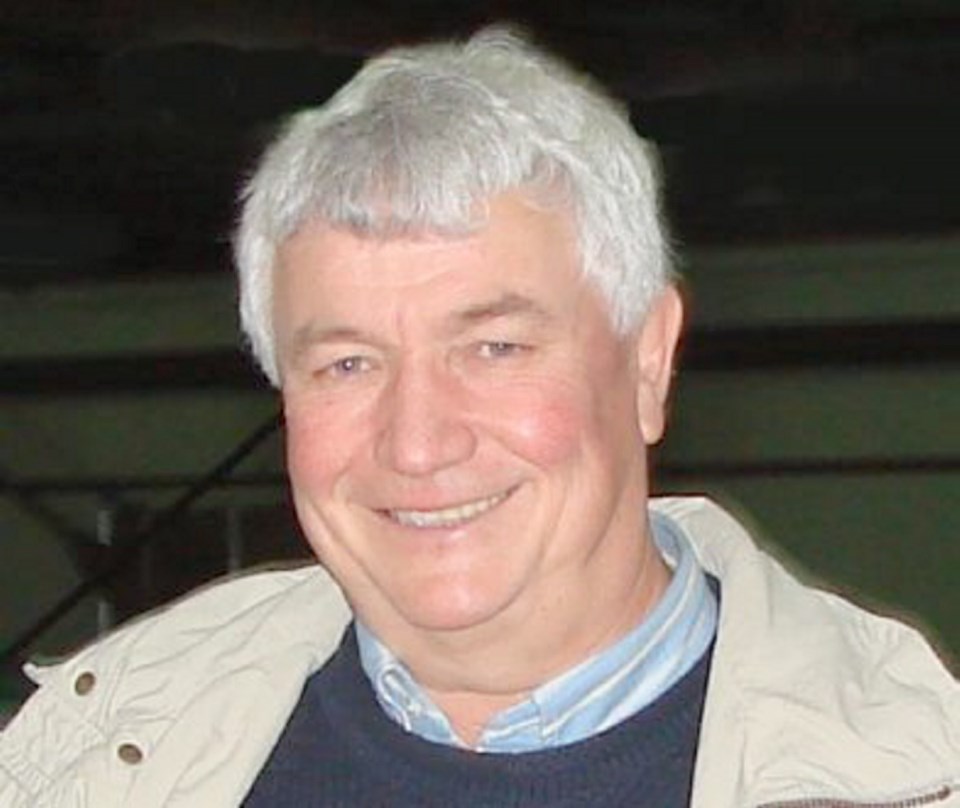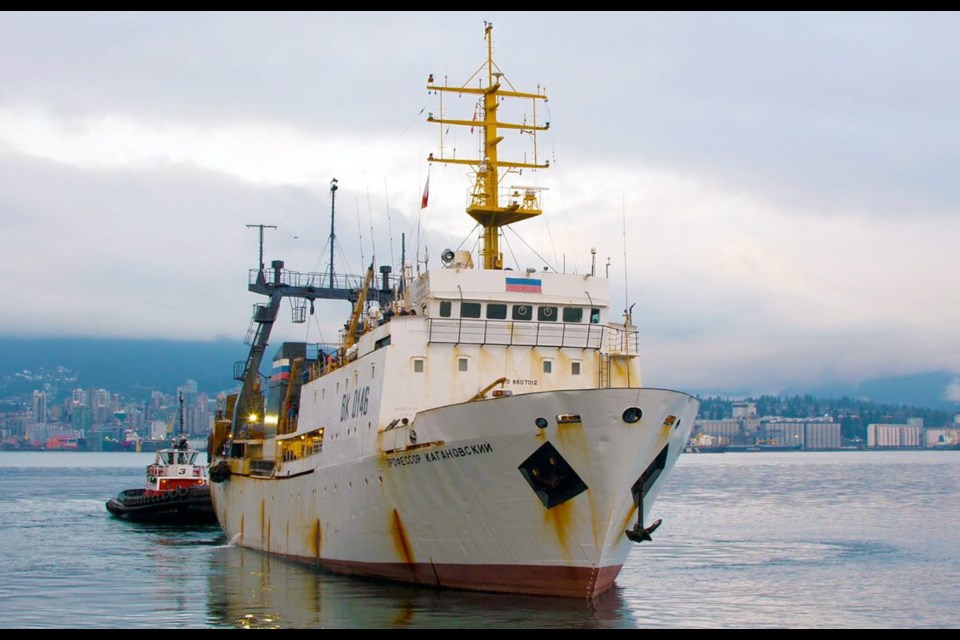Onboard DNA analysis of salmon — the first time such complex molecular research has been performed at sea — has discovered that B.C. and Puget Sound coho are wintering in the Gulf of Alaska.
The proof that it is possible to perform such analysis shipboard, and with only about $10,000 worth of compact equipment, is considered game-changing by international scientists halfway through a winter research cruise using the chartered Russian trawler Professor Kaganovsky and its crew in the Gulf.
“What is exciting is that this is an international expedition and there are five countries involved. And every single one of those countries is interested in knowing where their fish are,” said Kristi Miller, who works in molecular genetics at Fisheries and Oceans Canada’s Pacific Biological Station in Nanaimo. “This is the largest- scale field application that I know of for a molecular technology that is this advanced.”
Miller hired Christoph Deeg for post-doctoral work to develop, in just three months, a way to perform the DNA analysis at sea. His first analysis began Feb. 26 and continued through two days, revealing that coho caught originated from the Stikine, Skeena, and Hecate Strait systems and from Puget Sound in the U.S., Miller said.
Tiny clippings from coho fins were used for the more than 10-stage process that extracted DNA and eventually provided the origin of coho.

Scientists had not expected to see coho, Miller said from shore, where she is keeping up with the research. “Coho doesn’t spend that long in the ocean and everyone kind of thought that coho stays more coastal and doesn’t go that far offshore. And they’ve actually caught more coho than they were expecting.”
Without Deeg’s work, using two compact genetic-analysis devices, one that fits into a palm and the other the size of a breadbox, “there is just no way this would have been possible,” Miller said. With limited electricity and no Internet access, Deeg used his laptop computer to process the information.
In the Nanaimo lab, robots and a large sequencer, costing hundreds of thousands of dollars, run 700 samples at a time, whereas the onboard system is considerably smaller and uses far fewer samples. The analysis is similar to what takes place when people pay for private genetic-testing services, Miller said.
The DNA testing was possible because scientists have enough genetic information about coho and are developing more on chinook, Miller said.
Onboard research biologist Chrys Neville, also from Nanaimo, said in a report that the DNA results show “these high seas migrating coho salmon were not from a specific area, but from a wide geographic distribution.”
“New science, new discoveries, new knowledge. The successes of this expedition continues.”
Chum and coho have been the main salmon species caught so far, Neville said.
The research expedition was spearheaded by Richard Beamish, scientist emeritus with the Biological Station, who has raised about $1.3 million from governments, non-profit organizations and the private sector. Support from the Pacific Salmon Foundation was critical to allowing the DNA work to be carried out, Beamish said.
The ship is scheduled to return to Vancouver in about two weeks, and then make its way to Nanaimo immediately afterward.
The trawler sailed from Vladivostock on Jan. 11, then left Vancouver on Feb. 16 with 19 volunteer scientists from Pacific-salmon-producing countries — Canada, the U.S., Russia, Japan and Korea. They are carrying out surveys to learn about the abundance and condition of salmon during their first winter at sea in the Gulf of Alaska.

Researchers expect the surveys will help them understand what affects salmon survival in the open ocean and where the stocks spend most of their lives — keys to help manage the valuable fish. The first salmon collected in the trip were thin, but more recent surveys have found fatter fish, Miller said.
Decades of salmon research has concentrated on the coast. Relatively little is known about their offshore lives. Science has plenty of questions, including where they go, what they feed on, what diseases they face, how they survive the winter and which stocks fare the best and the worst.
This research is timely because although some B.C. salmon stocks are healthy, others, such as chinook, are at risk.
Chinook is a key food for the endangered southern resident orcas and is a mainstay of much of the B.C.’s sport-fishing-related tourism sector, providing jobs and supporting economies along the coast and on Vancouver Island.
Researchers onboard are also studying migration trajectories of different stocks, Miller said. “They are actually staying together pretty well. You are finding pockets of the same stock. It does appear that stocks have different migratory behaviours and a large portion of a given stock may actually go the same direction every year.”
The expedition is a key project for the International Year of the Salmon, and Miller is hopeful that its results will foster interest in future similar endeavours.
Along with gaining critical knowledge about salmon, Miller said, the goal was to highlight innovation and technological advances to come up with something that “really changes salmon science in the future.”
One aim is to “democratize” the molecular biology so that countries can share techniques with each other, she said. “It would be really fantastic if everybody was ultimately able to use the same technology and database.”
Three of the Russian scientists appear convinced already. Aleksander Slabinskii said in a statement from the ship: “This survey is timely, necessary and I hope our work and collaboration will continue in the future.”
“Personally for me, I found new methods and new knowledge that I will be implementing in our routine research in Russia,” Aleksei Somov said.
Their fellow scientist Arkadii Ivanov said: “I believe that beside our scientific findings, this expedition will bring our nations closer together.”
• You can follow the expedition and see videos here



